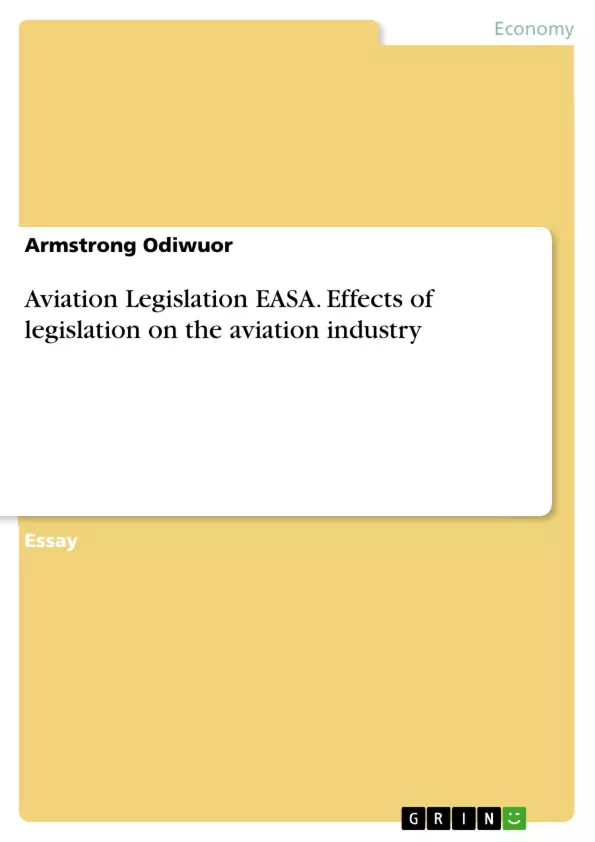Aviation legislation is a critical aspect of ensuring the safety and efficiency of the aviation industry. This reflective essay explores the impact of various aviation regulations on his career aspirations and behavior as an individual pursuing a career in aircraft maintenance engineering. The essay delves into key regulations such as Engineer Licensing (Part-66), Regulations Relating to Engineer Training Organizations (Part-147), Legislation Governing Maintenance Organizations (Part-145), and Part-M. Each regulation is analyzed in terms of its importance, challenges, and influence on career development.
Through examining these regulations, the author highlights their significance in ensuring professional competence, providing employment opportunities, and maintaining safety standards within the aviation industry. The essay concludes by emphasizing the crucial role of aviation regulations in fostering efficiency, safety, and smooth operations in the industry.
Inhaltsverzeichnis (Table of Contents)
- Introduction
- Engineer Licensing (Part-66)
- Regulations Relating to Engineer Training Organizations (Part-147)
- Legislation Governing Maintenance Organizations (Part-145)
- Part-M
- Conclusion
Zielsetzung und Themenschwerpunkte (Objectives and Key Themes)
This reflective essay examines the impact of aviation legislation on the career development of an aspiring aircraft maintenance engineer. It specifically focuses on four key regulations: Engineer Licensing (Part-66), regulations relating to Engineer Training Organizations (Part-147), legislation governing Maintenance Organizations (Part-145), and Part-M.
- The importance of aviation regulations for ensuring safety and efficiency in the industry
- The impact of these regulations on an individual's career path, including required qualifications and skills
- The benefits and challenges associated with working in a regulated environment
- The role of regulatory compliance in ensuring high quality and safety standards
- The importance of continuous learning and development in the aviation industry
Zusammenfassung der Kapitel (Chapter Summaries)
The introduction provides an overview of the importance of aviation legislation in ensuring safety and security within the aviation industry. It highlights the various aspects of the industry that are affected by regulations, including aircraft, pilots, engineers, and training organizations.
Engineer Licensing (Part-66) focuses on the standards and requirements for obtaining and maintaining aircraft maintenance engineer licenses. It discusses the benefits of acquiring these qualifications, including career opportunities and the ability to contribute to aircraft maintenance activities. However, it also addresses the challenges associated with meeting the stringent requirements, such as rigorous exams and practical experience.
Regulations Relating to Engineer Training Organizations (Part-147) explores the importance of ensuring high-quality training for aspiring aircraft maintenance engineers. It highlights the role of these regulations in setting standards for training organizations and ensuring that graduates meet the required skills and knowledge.
Legislation Governing Maintenance Organizations (Part-145) examines the regulations that ensure high quality and safety standards within maintenance organizations. It emphasizes the importance of compliance with these regulations for maintaining the integrity and safety of aircraft.
Schlüsselwörter (Keywords)
Key terms and concepts explored in this essay include aviation legislation, aircraft maintenance engineering, Engineer Licensing (Part-66), Engineer Training Organizations (Part-147), Maintenance Organizations (Part-145), Part-M, regulatory compliance, safety, quality, career development, and employment opportunities.
- Quote paper
- Armstrong Odiwuor (Author), 2024, Aviation Legislation EASA. Effects of legislation on the aviation industry, Munich, GRIN Verlag, https://www.grin.com/document/1453254



